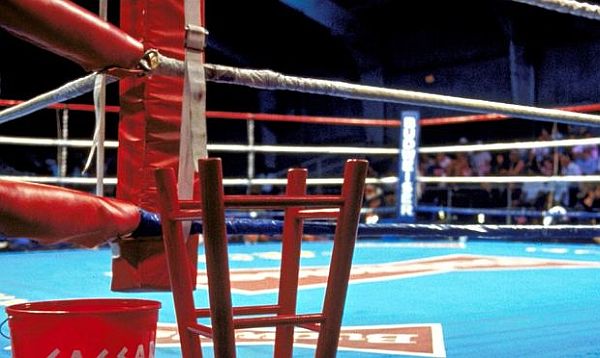A male American boxing champion will seldom put his belt on the line in his opponent’s backyard - Floyd Mayweather Jr, the world’s highest paid athlete, has not fought a single professional bout abroad.
But women’s boxing in the US is a different story. It tells a tale of female pugilists often looking outside their home base for better opportunities.
New York resident Alicia "Slick" Ashley lost her WBC Super Bantamweight belt in a very close match in Mexico City last September. Her challenger, Tijuana native Jackie "Aztec Princess" Nava, was Mexico’s best.
Ashley, 47, is one of several female boxing champions taking their chances south of the border, a telling indication that Mexico is embracing the sport in a way that its northern neighbor hasn’t in years. Experts go as far as wondering whether US women’s boxing will see better days or die a slow death.
Dual Benefits
Hailing from Jamaica, Ashley knew fighting the country’s darling in front of 8,500 raucous fans would be challenging. But the prize was worth it. In May, she earned $3,000 for a non-title match in New York. For her September 6th face-off against Nava, she pocketed ten times that amount, as well as the chance to compete against a world-class opponent.
Ashley and Nava co-headlined a card with Mexico’s top male boxers. Both bouts aired on one of Mexico’s premier television networks and took place in a 22,000-seat arena. The other large TV station in Mexico broadcast another boxing card headlined by women that same night.
In the US, women’s bouts are seldom televised or held in venues of comparable size. The Madison Square Garden, for example, last featured a women’s bout in 2009.
 |
"Women’s boxing in the US is dying," former boxer Laura Serrano, who helped legalize the sport in Mexico City in 1998 and now lives in Las Vegas said.
Lack of Opportunity
In the past, women’s boxing in the US found "incredible support", so much so that Serrano herself headed north in search of better opportunities.
Lack of skills is not the issue. Ashley says US promoters tend to set up lopsided matches to preserve their fighters’ record, a common practice in the sport.
"In Mexico it’s like a ‘you wanna fight? I’m ready to fight’ kind of attitude," she added.
There are also increasingly less opportunities to fight for a belt in the US.
A November 8th bout between heavyweights Martha Salazar and Tanzee Daniel in California was the first WBC world female title fight in two years. In the same period, Mexico has hosted 14, while Argentina has held six.
With the win, Salazar is the only US female world champion in the sport’s four main sanctioning bodies.
Perhaps a sign of things to come, California native Ava Knight, who has fought eight out of 10 title fights in Mexico, defeated Mexico's Guadalupe Martinez for the WBC title on November 13th in Washington D.C. Both matches give the US a much-needed chance to regain some ground in the international women’s boxing scene.
Lack of TV Exposure
In the mid-to-late 90s, female professional boxing was booming. In 1996, overnight sensation Christy Martin fought on a Mike Tyson pay-per-view undercard. A few years later, Muhammad Ali’s daughter Laila was earning $15,000 for her early contests.
But all of that success revolved around a few "it girls", according to Malissa Smith, author of A History of Women’s Boxing, and those opportunities eventually died out.
 |
In 2012, experts wondered whether female boxing’s historic debut in the London Games would breathe life back into the sport. It didn’t.
By the time women’s amateur boxing gained international recognition, professional female boxers were no longer on TV, said Smith.
Female boxers often blame the "old school" mentality that has ruled the big promotion companies for decades. They hope that as new blood enters the business, women will once again be brought to the forefront.
As women’s boxing takes a plunge, its main competitor, Mixed Martial Arts, is stealing the show in the US and abroad. The UFC’s first event in Mexico on November 15, 2014, was sold out in eight hours, becoming the "fastest sell-out" in the history of the venue.
Fighting MMA
It remains to be seen whether women’s boxing will catch up with MMA or forever live in the shadow of its younger, safer competitor. New Mexico native Holly Holm and Filipino American Ana Julaton, to name a few, made the switch to MMA last year.
To date, no fighter has died from a UFC fight. In women’s boxing, deaths are rare, but not impossible. The sport claimed its latest victim on October 25, 2014.
Most cab drivers in Mexico are able to name their favorite female boxer in a heartbeat while girls as young as five fill the local gyms after school. After all, boxing is the country’s second most popular sport after soccer.
Boxing in Mexico is still a male-dominated sport. At the highest levels, earnings of over $100,000 per bout have been reported. However, most female fighters struggle like their US counterparts. And the elephant in the room remains: Even the highest purse ever received by a woman pales in comparison with the multi-million dollar payouts to the men.
Despite the odds, Mexico remains a hotbed for women’s boxing. And as long as the sport continues to nosedive in the US, its southern neighbor will remain the best - and nearest - bet for top-level boxers like Ashley.
Original Story


